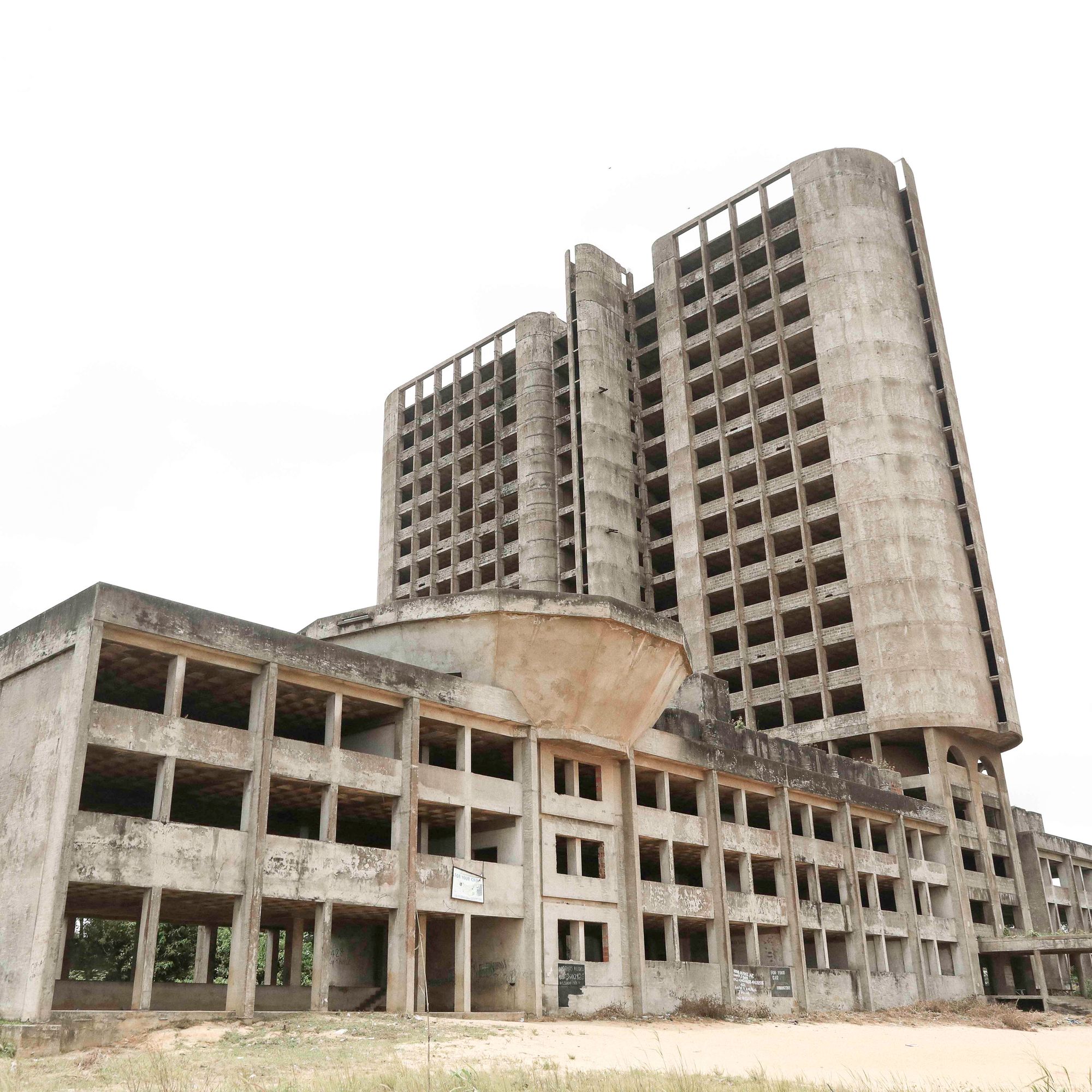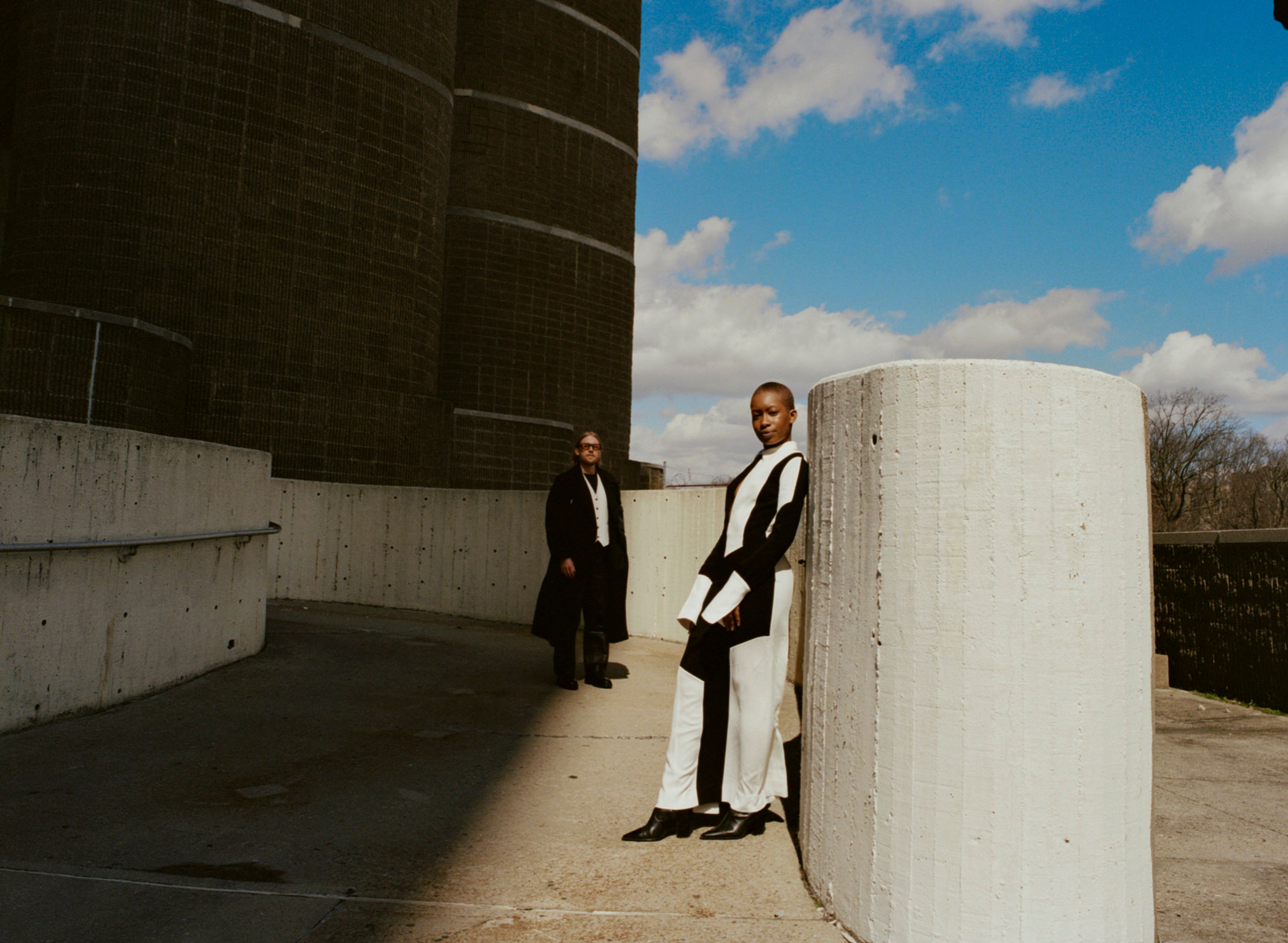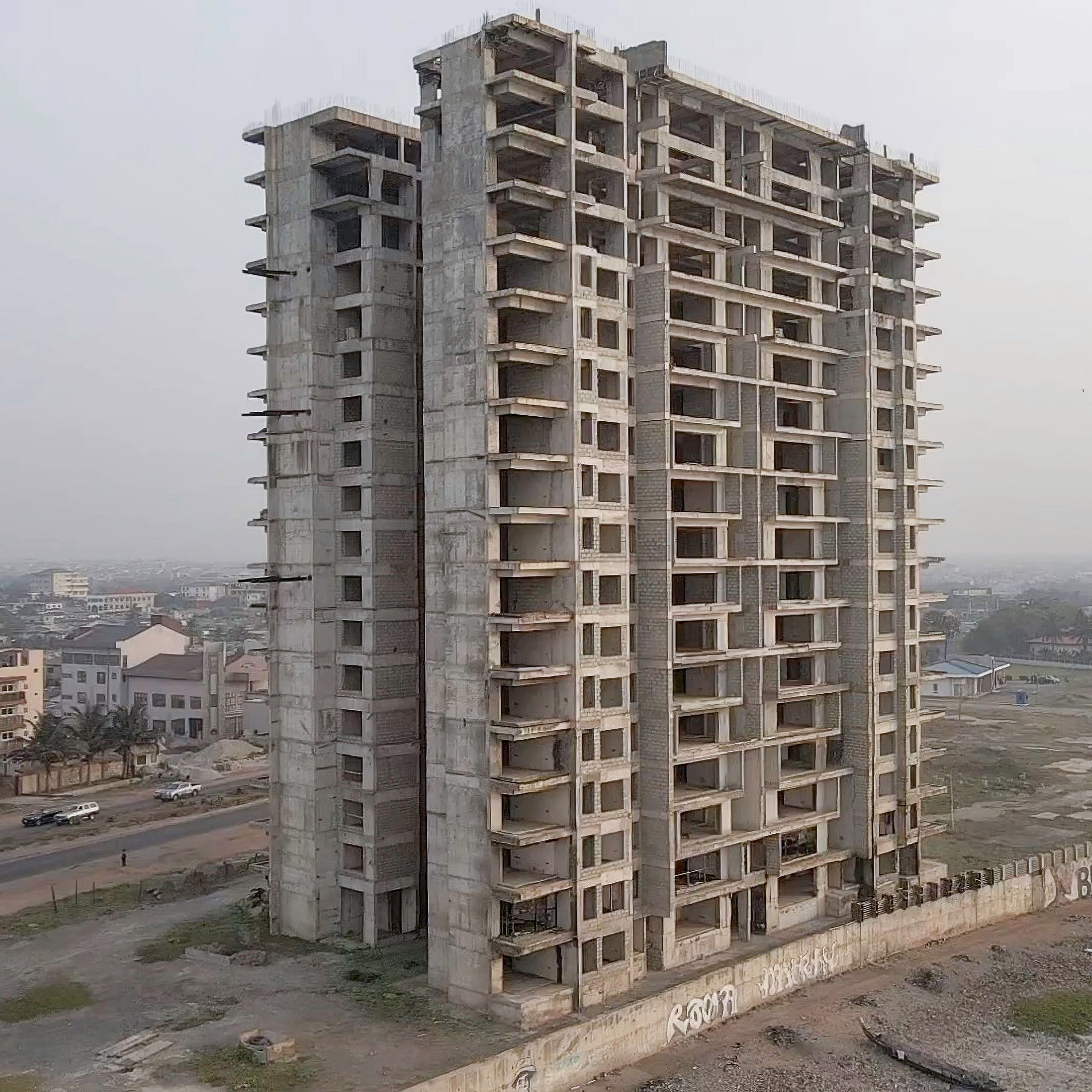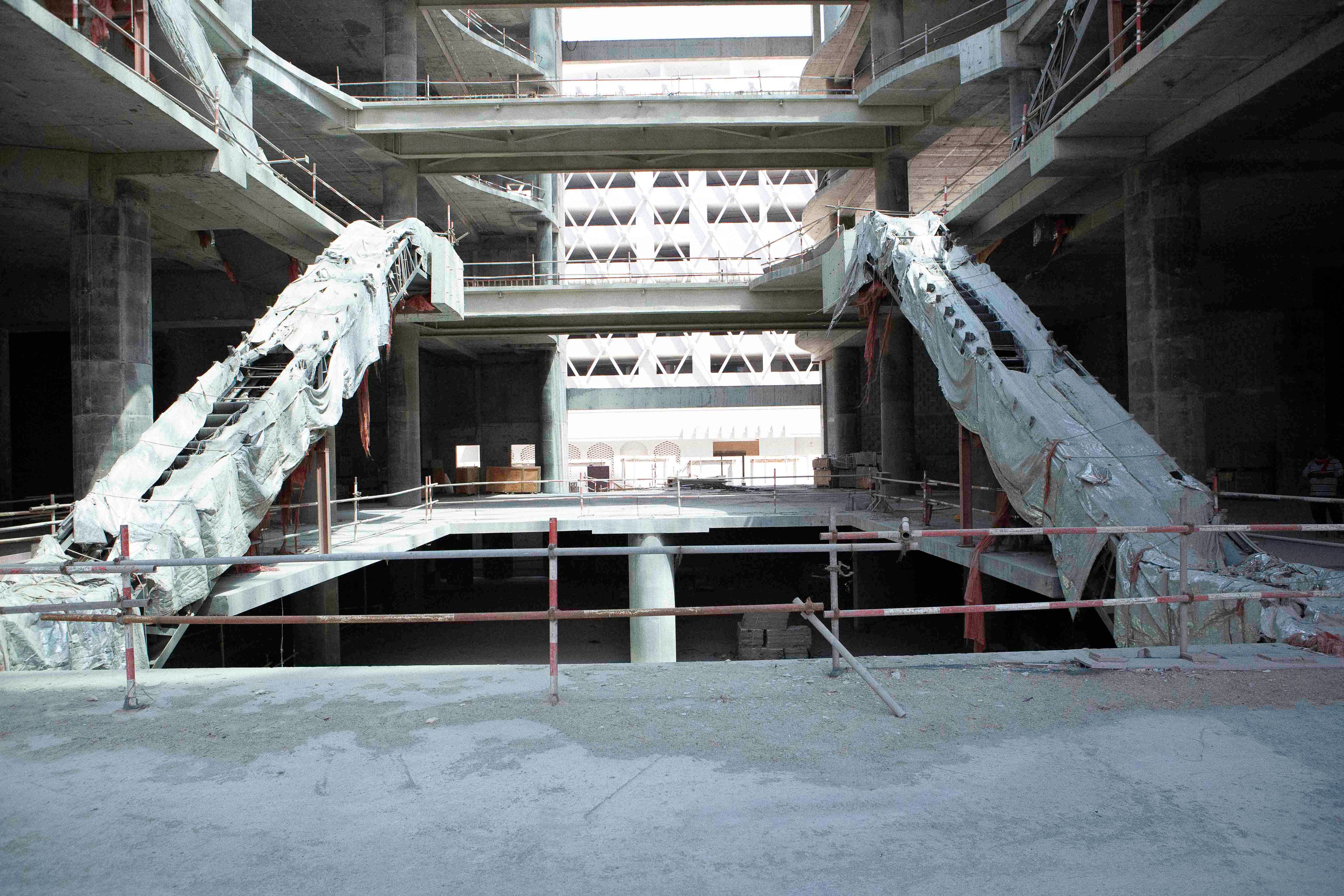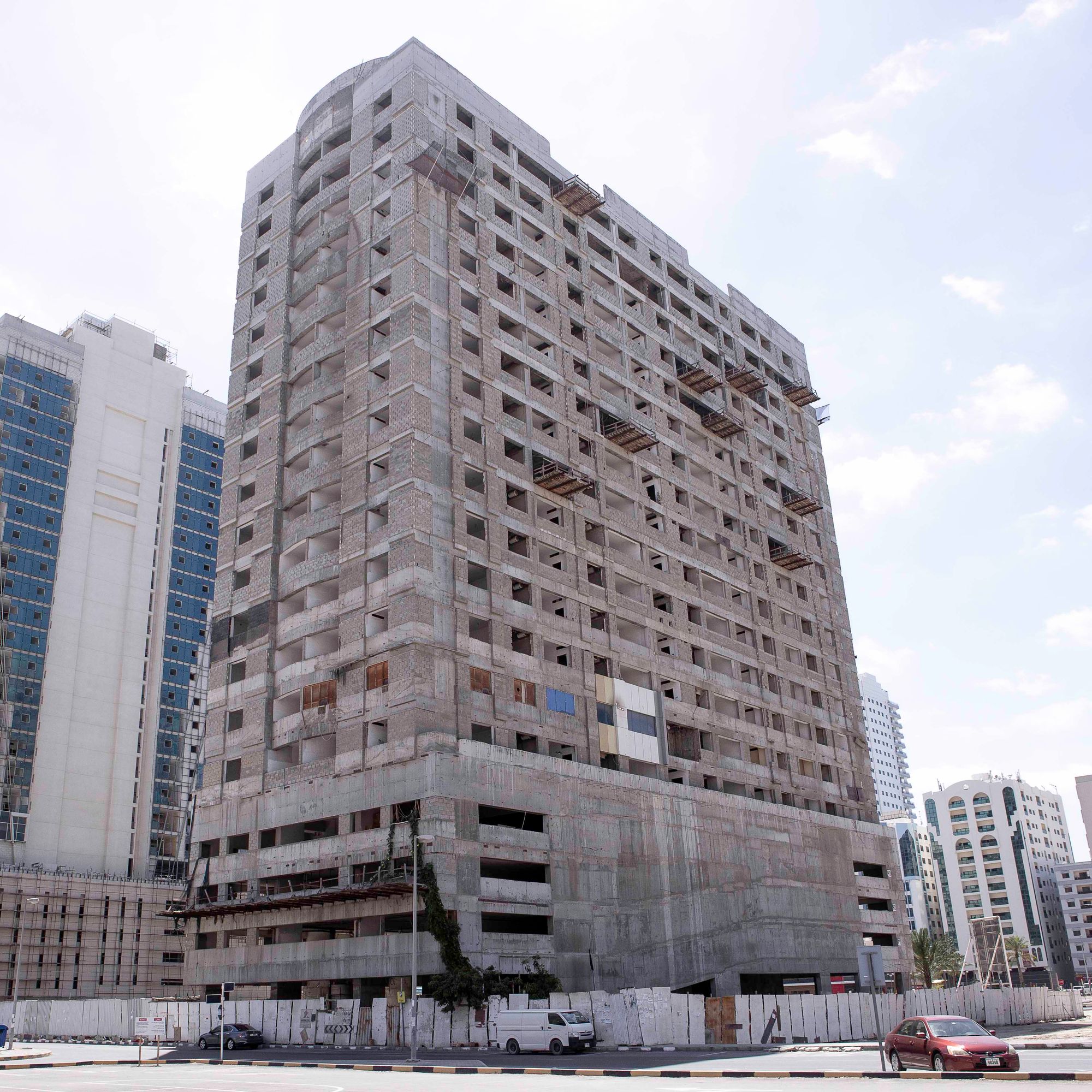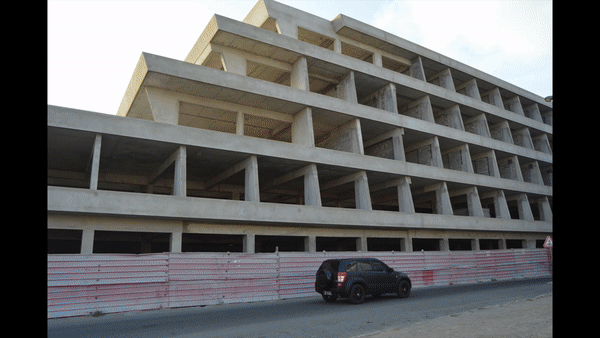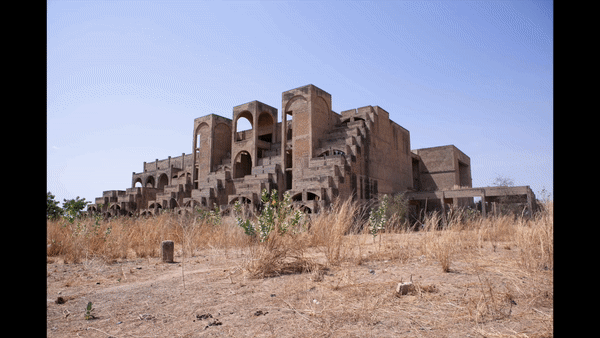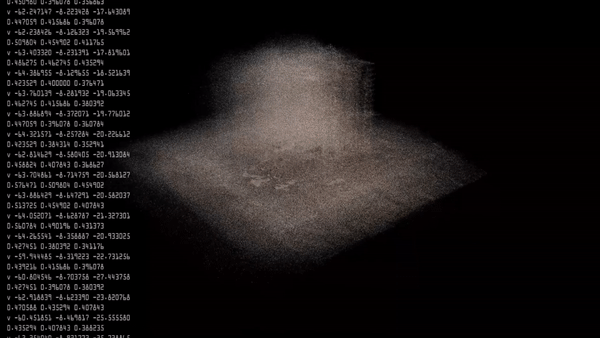There is a unique sensitivity in Limbo’s approach, which is especially perceptible in their use of language. While one could easily see such unfinished, ambitious, concrete structures as brutal, under the watchful and tolerant eye of Petit-Frère and Grip, they become “unsure,” “unaware,” “hesitant and purposeless,” and “trapped.” Limbo Accra innately seeks to redefine by repositioning — not the structure or its state, but the viewer and their perception of it. It is this perspective that transforms caretakers of incomplete buildings and tracts into “stewards of the land.”
This modus of reframing of preconceived narratives is apparent in Limbo’s respect for African oral traditions, which many diminish as an impediment to the continent’s development and facilitating its cultural erasure, as well as their consideration for biodiversity. Nature is typically disposed of in Ghanaian development projects, with sites notoriously wiped clean before the start of any construction project — “Has the land been cleared?” is a common refrain heard among speculators. Limbo, however, embraces local ecosystems, seeing beauty in the opportunity that the state of incompletion provides for the natural world to take over.
After spending the last half-decade drawing awareness to these incomplete structures, Petit-Frère and Grip now want to resurrect them from Limbo in a Dantean sense — the First Circle of the Inferno, the borderland, the Limbo of the Unbaptized — as they bring forth Into the Void. Using the idea of an open-sourced, communal history as the basis for their digital archive, Limbo Accra looks to sites like Twitter, Reddit, and even YouTube to showcase the work of “everyday Africans [who] are already taking their cameras, going to these sites, and documenting them,” as Petit-Frère says. In the Limbo way, everyday people become authors in the studio’s practice. Petit-Frère and Grip scan these communally sourced photographs and use photogrammetry to reconstruct the world in a “skeletal-carcass” form. They use crowdsourced audio recordings as background noise in their videos, and embrace the public’s ideas of what these buildings could be. In this world-building exercise marrying sound, image, and language, Limbo insists on the value the pre-existing — a total subversion of much of the contemporary impulses of modern architecture and material culture at large, which is concerned with, if not infatuated by, the idea of making — the more, the new, the total, and as a result, the labeled, the certain, the fixed.
